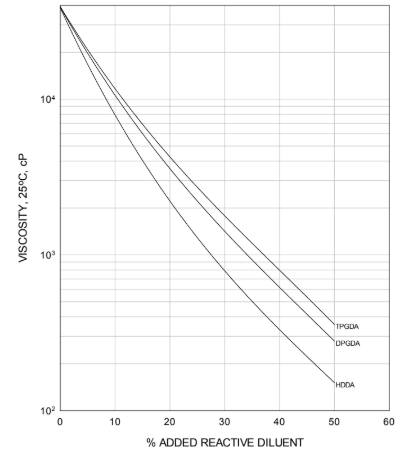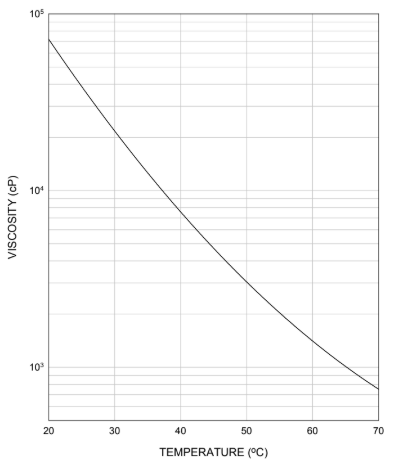Enhanced TDS
Identification & Functionality
- Blend
- No
- CASE Ingredients Functions
- Chemical Family
- Country of Origin
- Function
- Binder, Resin
- Industrial Additives Functions
- Product Code
- MITM00450
- Single Ingredient
- Yes
- Technologies
- Product Families
Features & Benefits
- CASE Ingredients Features
- Performance Highlights
EBECRYL® 8501 is characterized by:
- Excellent cure response under low light intensity conditions
- Good wetting of inert and reactive fillers
- 1K package configuration with 2K performance properties for automotive refinish putties
- Reduce sanding time compared to 2K automotive refinish putties
- Deep dent repair
- Easily sculptured to car body shape
Cured products containing EBECRYL® 8501 are characterized by the following performance properties:
- Excellent adhesion to metal, metallic, and various automotive substrates
- Good flexibility and toughness
- Low shrinkage upon cure
The actual properties of UV/EB cured products also depend on the selection of other formulation components such as reactive diluents, additives, and photoinitiators.
Applications & Uses
- Adhesive & Sealant End Applications
- Coating End Applications
- Compatible Substrates & Surfaces
- Cure Method
- Industrial Additives End Use
- Markets
- Applications
- Product Applications
EBECRYL® 8501 is recommended for use in:
- Low energy cure
- Automotive end of line spot repair
- Automotive refinish
- General metal
- Metallized plastics
- Flexible filled coatings
- Thin film solar cell
Properties
- Physical Form
Technical Details & Test Data
- Viscosity Reduction
Graph I - EBECRYL® 8501 - Viscosity reduction with reactive diluents

Graph I shows the viscosity reduction of EBECRYL® 8501 with dipropylene glycol diacrylate (DPGDA), 1,6-hexanediol diacrylate (HDDA), and tripropylene glycol diacrylate (TPGDA). Although viscosity reductions can be achieved with non-reactive solvents, reactive diluents are preferred because they are essentially 100% converted during UV exposure to form an integral part of the coating, thus avoiding solvent emissions. The specific reactive diluent used will influence performance properties such as flexibility and adhesion.
Graph II - EBECRYL® 8501 - Viscosity vs. Temperature

Graph II illustrates the change in viscosity of EBECRYL® 8501 with increasing temperature.
Packaging & Availability
Principal Information
- Group Principal Number
- S000001
- Principal
Storage & Handling
- Storage Conditions
- Care should be taken not to expose the product to high temperature conditions, direct sunlight, ignition sources, oxidizing agents, alkalis or acids. This might cause uncontrollable polymerization of the product with the generation of heat.
- Storage and handling should be in stainless steel, amber glass, amber polyethylene or baked phenolic lined containers. Procedures that remove or displace oxygen from the material should be avoided. Do not store this material under an oxygen free atmosphere.
- Dry air is recommended to displace material removed from the container. Wash thoroughly after handling. Keep container tightly closed. Use with adequate ventilation.
Other
- Appearance
- Clear to clouded liquid
- Appearance (SDS)
- Clear viscous liquid
- Color (SDS)
- Light amber
- IATA/ICAO Proper Shipping Name
- Environmentally hazardous substance, liquid, N.O.S.
- IATA/ICAO Technical name (N.O.S.)
- Isobornyl acrylate
- IATA/ICAO UN Number
- UN3082
- IMO/IMDG Proper Shipping Name
- Environmentally hazardous substance, liquid, N.O.S.
- IMO/IMDG Technical name (N.O.S.)
- Isobornyl acrylate
- IMO/IMDG UN Number
- UN3082
- Insoluble in (SDS)
- Water
- Item Number
- Odor (SDS)
- Mild organic
- Other Hazards
- Polymerization may occur from excessive heat, contamination or exposure to direct sunlight .
- Protect from Freezing
- Yes
- TDG Canada Proper Shipping Name
- Environmentally hazardous substance, liquid, N.O.S.
- TDG Canada Technical name (N.O.S.)
- Isobornyl acrylate
- TDG Canada UN Number
- UN3082
- Temperature Control
- Yes
- USA/DOT Proper Shipping Name
- Environmentally hazardous substance, liquid, N.O.S.
- USA/DOT Technical name (N.O.S.)
- Isobornyl acrylate
- USA/DOT UN Number
- UN3082
- Application Information
Value Units Test Method / Conditions Dosage (Use Level) 40.0-60.0 % % - Material Composition
Value Units Test Method / Conditions Oligomer Content 85.0 %(W/W) %(W/W) - Mechanical Properties
Value Units Test Method / Conditions Elongation at Break 28.0 % % UV cured, 125µm thick films Tensile Elongation 28.0 % % at break, UV cured, approx. 125μ thick films Tensile Modulus 120000.0 psi psi at break, UV cured 125 μ thick films Tensile Modulus 120000.0 psi psi UV cured 125 µ thick films Tensile Strength 4200.0 psi psi at break, UV cured 125 μ thick films Tensile Strength 4200.0 psi psi UV cured 125 µ thick films Toughness 1000.0 in·psi in·psi UV cured 125 µ thick films - Optical Properties
Value Units Test Method / Conditions Color Scale max. 2.0 Gardner Gardner Gardner Color Scale - Physical Properties
Value Units Test Method / Conditions Density 1.1 g/mL g/mL at 25°C Storage Temperature 104.0 °F °F Viscosity 30000.0-43000.0 cPs cPs at 25°C - SDS Physical and Chemical Properties
Value Units Test Method / Conditions Density (SDS) 1.14 g/cm³ g/cm³ Flash Point (SDS) min. 100.0 °C °C Vapor Pressure (SDS) max. 0.133 hPa hPa at 25°C Viscosity (SDS) 61000.0 mPa.s mPa.s at 25°C, viscous liquid - Shelf Life & Stability
Value Units Test Method / Conditions Shelf Life 0.0 d d
